Twilight glow phenomena
Twilight glows vary considerably in strength and color, but are enhanced in the aftermath of great volcanic eruptions. In 1974-5 the drifting particles from the El Fuego volcano brought vivid twilight glows to my attention for the first time in my adulthood. Here is a painting made from photographs and observations of one exceptional display viewed from Atherton, California.
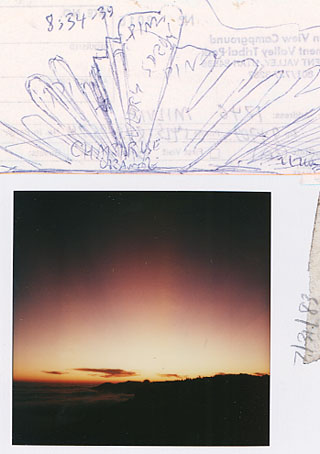
The eye vs. the camera
The sketch and the Polaroid were made at the same time. Subtle brightness variations across the delicate radial 'fan like' structure are discernible to a trained eye, far surpassing the ability of the Polaroid film, a contrasty medium, to record. Only the grossest of the 'ray' features can be made out in the print, yet the color on the outer fringes is well recorded.
In the Summer of 1983 the amount of volcanic material in the atmosphere peaked, and the twilights blazed like the light of a distant conflagration. A few of these twilights lit up the sky for hours after normal night fall.
Normally the twilight glow is symmetrical and subdued. It is an indication of the amount of material circulating in the uppermost atmosphere. It is a kind of screen upon which the light of the Sun is thrown after it has skimmed along the atmosphere, being relieved of all but the reddest rays in the process.
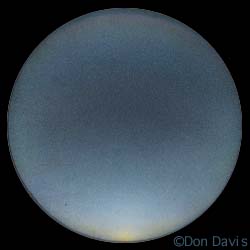
In these all sky color sketches a 'normal' subdued twilight sequence is shown. First the just vanished Sun brightly illuminates the Western atmosphere with a nearby bright golden halation quickly fading. To the East a darker turquoise gray 'Earth shadow' rises from the horizon. There is usually a faint pinkish border to the 'Earth shadow', it's strength being an indicator of the likely brightness of the coming twilight display.
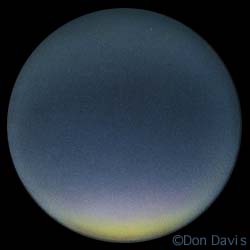
As twilight progresses the sky overhead darkens, the 'Earth shadow' climbs and merges with the sky, and the remaining light gathers toward the west. The subdued pink upper portion of the shadow stealthily migrates across the sky, becoming a brighter horizon hugging golden glow steadily becoming narrower and better defined. In most twilight, such as this one, only subdued colors appear.
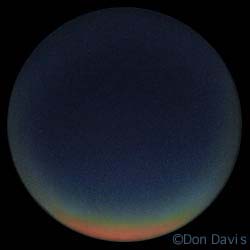
As twilight finishes, the colors deepen and fade while the sky brightness dramatically drops. The sharpening upper border of the twilight remnant corresponds with the retreating border of the 'Earth Shadow' seen shortly after Sunset. Much of the reddening of normal twilights is from the absorption of light in the intervening atmosphere. Exceptional displays assert their radiance enough to reveal the darkened 'dirtiness' of the absorbing lower layers of atmosphere nearer the horizon.
This mid 1970s sketch catches, in negative,
the 'rays' caused by distant clouds over the horizon
casting long shadows on the twilight layer. Fine horizontal texture
in the sunlit layer was seen.

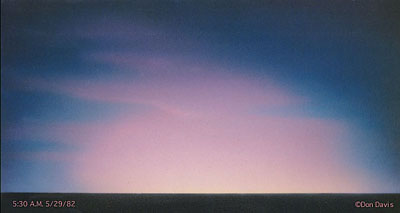
On May 29 1982 the morning twilight, although subdued in color, revealed irregularities suggestive of structure in the layer of material catching the Suns rays. Such a thing would be very difficult to photograph. The field of view of the drawing is about 90 degrees.
In 1982-3 a spectacular series of brilliant twilights occurred, as a vast plume of sulfuric acid droplets and dust spread worldwide following the eruption of El Chichon in Mexico. I sketched many of these evening twilights, scribbling notes on perceived colors and their boundaries as they changed. Below is a typical field sketch, sometimes supplemented with photography.
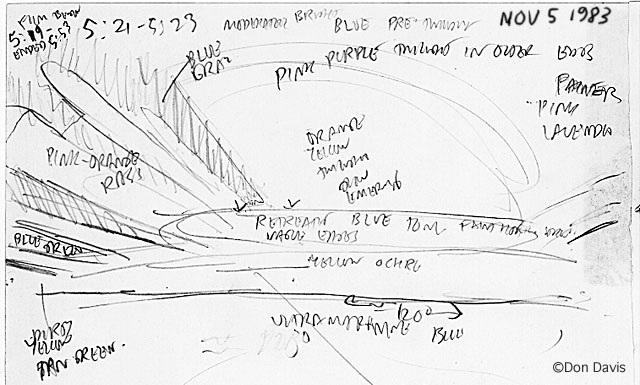
I tried to create a kind of chart measuring how the twilight colors above the Sun change. It is as if a narrow vertical scan of the sky was repeatedly made and laid out in the horizontal 'time' dimension.
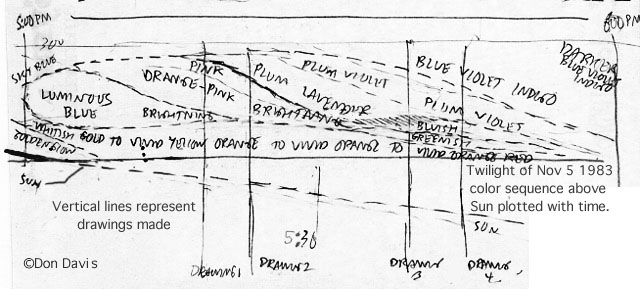
In early 1984 some odd features appeared during twilights, presumably related to remaining volcanic material the sunlight was acting upon. This 'counter halo' was among the more unusual.
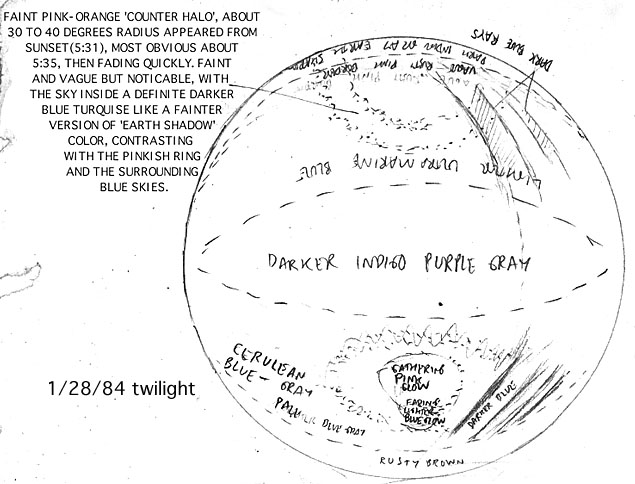
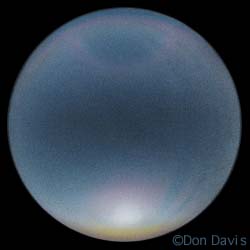
Here is a color 'all sky' sketch made from the field notes. Note the faint 'rays' along the Northern horizon. The luminous 'silver shield' above the Sun of more or less pure sunlight being 'forward scattered' by the air is being replaced, from the top down, by the coral pink twilight colors. The Earth shadow rises to the East, bordered by a vague reddish band with the anomalous 'counter halo'.
Right: On June 12, 1991 Mt Pinatubo in the Philippines erupted, creating a planet girdling plume which brought a couple of months of intense purple twilight glows, the latest so far (2008). About a month after the eruption the edge of the high altitude plume revealed a sharply defined edge as seen from Hawaii.
(top) At sea level sunset, the silvery veil of directly sunlit plume layer shines with the blueish white color of sunlight largely unfiltered by the atmosphere we live under.
(bottom) The last direct sunlight this layer sees is a deep crimson remnant, lit by a heavily filtered Sun persisting through atmospheric refraction well after actually going over the distant horizon. This partially masked twilight glow allowed a rare look at its contribution to the nominal twilight sky color and brightness.